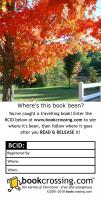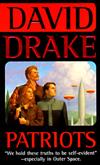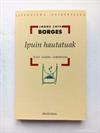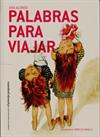Sweat: A History of Exercise
2 journalers for this copy...
I got this hardcover at Barnes and Noble, pleased to find a new book by Hayes. His mix of science, history, and personal memoir has entertained, informed, and touched me through his previous books, including the fairly recent Insomniac City: New York, Oliver, and Me about his relationship with the late Oliver Sacks, and I look forward to this one.
Later: Another enjoyable memoir/historical-retrospective, this one centering on exercise - as distinct from work, play, or athletic competition, though it does overlap with those things at times. It turns out that the author has enjoyed - or at least craved - exercise for decades, maintaining regular routines through many of his life's ups and downs. Throughout the book he includes descriptions of his swimming, running, machine-based workouts, yoga - and while some of them change through the years, due to injury or aging or opportunity, he keeps it up, and appreciates (more and more as the years pass) the things that his body can still do...
There's a more specific through-line in this book than "exercise," though - Hayes stumbled across the 1569 book De Arte Gymnastica by Girolamo Mercuriale, one of the earliest known books of exercise instructions, with illustrations by architect/artist Pirro Ligorio. (Among the many fascinating parts of the book, there's Hayes' by-appointment-only pilgrimage to a palazzo on Isola Bella to see the original drawings!)
The book features some truly delightful bits about his visits with rare-books librarians and archivists in New York, France, and Italy - indeed, early on he notes that "libraries, like gyms, have always been a refuge for me, just as gyms, like libraries, have always been places of learning." His interactions with the different librarians are sometimes problematic (especially in countries where he doesn't speak the language) but are mainly wonderful, and in some cases spark a matching interest in the subject matter, with people going to great efforts to dig up related works that he might like. Heartwarming indeed!
Hayes interviewed someone else who'd been intrigued by Mercuriale's work, British historian Vivian Nutton, who did a recent English translation; their conversation was entertaining in itself, not least when Hayes asked Nutton if translating the book had influenced Nutton's exercise routine. Nutton replied that while he was athletic in his youth, his only recent exercise was doing something Mercuriale never mentioned: he rings bells in his local church! From what I know of that, it's a very taxing exercise indeed, requiring controlled strength and - for the very long peals, which can run for hours - immense stamina...
There's a lot going on in the book besides Hayes' chasing-down of ancient manuscripts and illustrations. He inserts episodes from his past, from a stint in training at a boxing school (great exercise, but the getting-hit-in-the-face part not so much) to swimming with his late partner Oliver. And then he gets into the history of running - and sweat, and the theories as to how hominids evolved to be bipedal, with some interesting questions as to which came first, the ability to cool most of our bodies by sweating (which enables the long-distance running that helped early man run prey animals down) or climbing down from the trees in the first place, and where the loss of most of our body-hair came in. In that chapter, Hayes goes into the biochemistry of sweat itself. He also delves into how early people got into running as an organized sport or exercise rather than as a survival tactic, taking ancient wall-art or images on pottery or tile as suggestions. (At one point, curious about the many representations of athletes performing entirely nude, he takes advantage of a secluded driveway at the home he shared with Oliver to experiment by running a half-mile in his usual running garb, and then nude. His experiences were enlightening {grin}.)
And there's so much more. In one chapter, he's led (by one of those deliciously-helpful rare-books librarians) to find other, less well-known works by Mercuriale, including a text on diseases of the skin. Turns out it was translated by a professor of dermatology in Kansas City - who did not know any Latin, so he drafted a local priest and Irene Blasé, a retired schoolteacher who'd taught Latin. The dermatologist had written that Blasé, a "petite maiden lady" with "one good eye" had not only worked on the skin-disease manuscript but had completed a rough translation of De excrementis - another Mercuriale book, this one about substances excreted from the body, including (wait for it) sweat - before she died at age 90. The discovery of the surviving typescript pages of that rough translation feels near-miraculous! And I loved the way Hayes appreciated a kind of kinship with the late Miss Irene Blasé over the works of a man dead for over 400 years. The love of research, the love of the work itself and the connections it can make, as well as the knowledge it may impart - it all shines through.
There's so much more here - it's the kind of book that I wind up studding with tiny bookmarks, for the many tidbits I want to cite and/or remember, and after a while it's clear I'd have to transcribe half of the book. So I won't do that - but I will add another charming (and completely unexpected) anecdote. At one point Hayes got to meet the late Supreme Court Justice Ruth Bader Ginsburg, who was 81 at the time, and - what with working on the book and all - asked her about her exercise regime. "Every day, I do twenty push-ups," she told him. (She'd considered Jazzercise at one point but didn't like the music, preferring opera.) When Hayes told her she'd inspired him to go home and do twenty push-ups, she said "You're young and healthy. You can do a lot more than that." And so... he does.
Other books of Hayes' that I recommend:
Sleep Demons: an Insomniac's Memoir
Five Quarts: A Personal and Natural History of Blood
The Anatomist: A True Story of Gray's Anatomy
Later: Another enjoyable memoir/historical-retrospective, this one centering on exercise - as distinct from work, play, or athletic competition, though it does overlap with those things at times. It turns out that the author has enjoyed - or at least craved - exercise for decades, maintaining regular routines through many of his life's ups and downs. Throughout the book he includes descriptions of his swimming, running, machine-based workouts, yoga - and while some of them change through the years, due to injury or aging or opportunity, he keeps it up, and appreciates (more and more as the years pass) the things that his body can still do...
There's a more specific through-line in this book than "exercise," though - Hayes stumbled across the 1569 book De Arte Gymnastica by Girolamo Mercuriale, one of the earliest known books of exercise instructions, with illustrations by architect/artist Pirro Ligorio. (Among the many fascinating parts of the book, there's Hayes' by-appointment-only pilgrimage to a palazzo on Isola Bella to see the original drawings!)
The book features some truly delightful bits about his visits with rare-books librarians and archivists in New York, France, and Italy - indeed, early on he notes that "libraries, like gyms, have always been a refuge for me, just as gyms, like libraries, have always been places of learning." His interactions with the different librarians are sometimes problematic (especially in countries where he doesn't speak the language) but are mainly wonderful, and in some cases spark a matching interest in the subject matter, with people going to great efforts to dig up related works that he might like. Heartwarming indeed!
Hayes interviewed someone else who'd been intrigued by Mercuriale's work, British historian Vivian Nutton, who did a recent English translation; their conversation was entertaining in itself, not least when Hayes asked Nutton if translating the book had influenced Nutton's exercise routine. Nutton replied that while he was athletic in his youth, his only recent exercise was doing something Mercuriale never mentioned: he rings bells in his local church! From what I know of that, it's a very taxing exercise indeed, requiring controlled strength and - for the very long peals, which can run for hours - immense stamina...
There's a lot going on in the book besides Hayes' chasing-down of ancient manuscripts and illustrations. He inserts episodes from his past, from a stint in training at a boxing school (great exercise, but the getting-hit-in-the-face part not so much) to swimming with his late partner Oliver. And then he gets into the history of running - and sweat, and the theories as to how hominids evolved to be bipedal, with some interesting questions as to which came first, the ability to cool most of our bodies by sweating (which enables the long-distance running that helped early man run prey animals down) or climbing down from the trees in the first place, and where the loss of most of our body-hair came in. In that chapter, Hayes goes into the biochemistry of sweat itself. He also delves into how early people got into running as an organized sport or exercise rather than as a survival tactic, taking ancient wall-art or images on pottery or tile as suggestions. (At one point, curious about the many representations of athletes performing entirely nude, he takes advantage of a secluded driveway at the home he shared with Oliver to experiment by running a half-mile in his usual running garb, and then nude. His experiences were enlightening {grin}.)
And there's so much more. In one chapter, he's led (by one of those deliciously-helpful rare-books librarians) to find other, less well-known works by Mercuriale, including a text on diseases of the skin. Turns out it was translated by a professor of dermatology in Kansas City - who did not know any Latin, so he drafted a local priest and Irene Blasé, a retired schoolteacher who'd taught Latin. The dermatologist had written that Blasé, a "petite maiden lady" with "one good eye" had not only worked on the skin-disease manuscript but had completed a rough translation of De excrementis - another Mercuriale book, this one about substances excreted from the body, including (wait for it) sweat - before she died at age 90. The discovery of the surviving typescript pages of that rough translation feels near-miraculous! And I loved the way Hayes appreciated a kind of kinship with the late Miss Irene Blasé over the works of a man dead for over 400 years. The love of research, the love of the work itself and the connections it can make, as well as the knowledge it may impart - it all shines through.
There's so much more here - it's the kind of book that I wind up studding with tiny bookmarks, for the many tidbits I want to cite and/or remember, and after a while it's clear I'd have to transcribe half of the book. So I won't do that - but I will add another charming (and completely unexpected) anecdote. At one point Hayes got to meet the late Supreme Court Justice Ruth Bader Ginsburg, who was 81 at the time, and - what with working on the book and all - asked her about her exercise regime. "Every day, I do twenty push-ups," she told him. (She'd considered Jazzercise at one point but didn't like the music, preferring opera.) When Hayes told her she'd inspired him to go home and do twenty push-ups, she said "You're young and healthy. You can do a lot more than that." And so... he does.
Other books of Hayes' that I recommend:
Sleep Demons: an Insomniac's Memoir
Five Quarts: A Personal and Natural History of Blood
The Anatomist: A True Story of Gray's Anatomy
I'm adding this to the Biographies of Things bookbox. (The bookbox journal includes my selections and replacements.) Hope someone enjoys it!
Looking forward to this!












